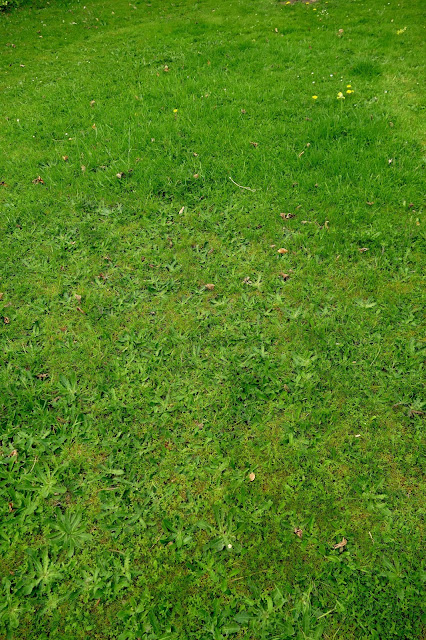Here are some pic's of my garden from yesterday.
It is amazing that all these Cowslips originated from just one plant acquired from my mother's garden. She got it from an RAF airfield.
 |
| Yellow Rattle lawn area |
A couple of summers ago, Yellow Rattle seeds were thrown on the lawn. An annual, it is now seeding very successfully. Hemiparasitic on grasses it restricts grass vigour to the benefit of other wild flowers and Common Carder bees love the Yellow Rattle flowers.
Spanish bluebells (here before I moved in) are not killed off by mowing and hoeing so now I pull them up to avoid hybridising with our native ones.
 |
| A former lawn, now a Hazel copse. |
 |
| Lady's-smock or Cuckooflower |
Last year Bittercress was weeded out of the flower beds. Lady's-smock seedlings,
Cardamine pratensis were left though and now they are flowering all over the place, which was the effect that I wanted to achieve...to the benefit of butterflies and other insects.
 |
| Lady's-smock or Cuckooflower |
The white flowers above are Kale, "Spis bladene". See also
https://sussexrambler.blogspot.co.uk/2008/05/gardening-tips-during-chelsea-flower.html
 |
| Euphoria has come in from next door. That's fine:Nomad bees enjoy it. |
 |
| Ground-ivy |
Nomad bees constantly patrol areas of Ground-ivy,
Glechoma hederacea, searching for bee nests to parasitise. All bees seem to love this plant - a dead-nettle.
The dustbin lid is there for grass snakes, which appear intermittently.
 |
| A wild garlic path |
Geum, grasses and ivy were weeded out and GarlicMustard,
Alliaria petiolata seedling left for the effect that I hoped for. Garden carpet moths' and Orange tip butterflies' larvae feed on it.
Rosemary is treated as a shrub growing to head height, which makes it easier to photograph bees.
A beech hedge was planted some years ago converting a lawn to a small woodland habitat.
Above, the fruit cage has gone and the weedy, overgrown fruit is a mecca for bees.
Please see
https://sussexrambler.blogspot.co.uk/2017/05/the-rich-insect-life-of-wildlife-garden.html
for pic's of insects from last May.
A really wild area.
The lawn is really damp in places, which allows Marsh thistles to grow, which are visited by bees.
Click on any picture to expand it.
My experiences are now an illustrated talk. Please see
http://www.peterlovetttalks.co.uk/page19.html